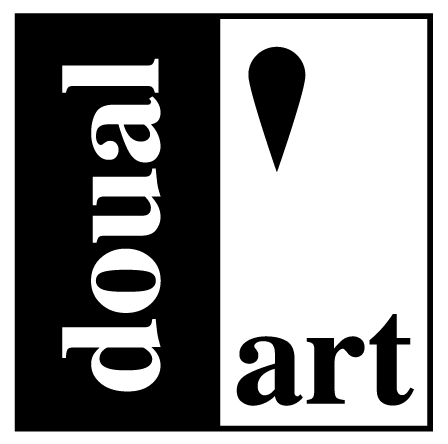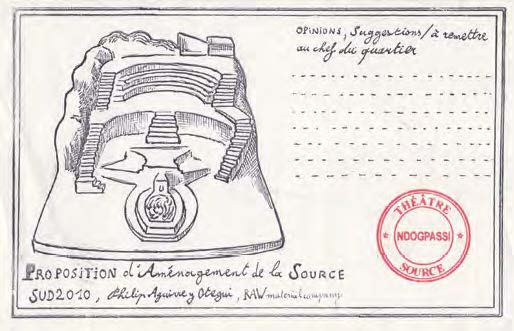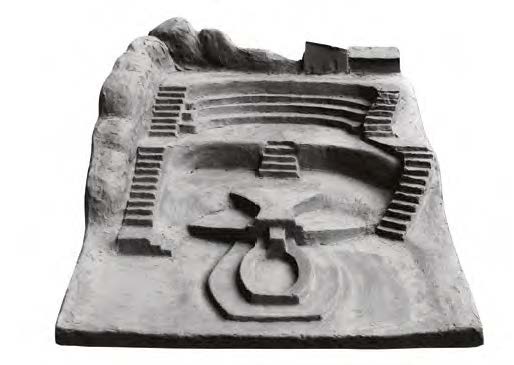By Philip Aguirre y Otegui
Après sa résidence à Douala en janvier 2010, Philip Aguirre y Otegui a décidé d’aménager un site qui surplombe une source d’eau naturelle du quartier Ndogpassi III. Ce quartier est situé à la périphérie de Douala et habité par une population d’environ 5,000 âmes. Il ne dispose d’aucune véritable infrastructure (routes fortement dégradées et construites par les habitants eux-mêmes, fourniture d’énergie et d’eau très instable, et ainsi de suite).
Philippe Aguirre a été inspiré par ce terrain naturel, formé de paliers de boue à plusieurs niveaux, descendant vers la source d’eau naturelle qui dessert tous les habitants de Ndogpassi III.
L’artiste a décidé de métamorphoser la forme naturelle de la zone entourant la source d’eau du quartier avec une structure typique de la Rome antique, de forme amphithéâtrale. Le Théâtre-Source est un amphithéâtre en béton, conçu par Philip Aguirre et construit sous la direction de l’architecte Mauro Lugaresi. Le processus de production a duré trois ans, ce qui a permis une longue médiation avec la communauté locale.
Il a été rebaptisé par les habitants en 2015, après le décès du directeur artistique de doual’art. Le Théâtre-Source Didier Schaub présente six niveaux de gradins que s’étendent sur une vingtaine de mètres de longueur, desservis par trois volées d’escaliers d’une trentaine de marches, permettant d’accéder aux trois plateaux scéniques. La source naturelle est située au niveau du sol, au centre du théâtre. L’installation permet d’accueillir près d’un millier de personnes; le théâtre est devenu un point de repère important pour les habitants, en particulier pour les femmes et les enfants, qui l’utilisent pour s’y rencontrer, pour bavarder et pour jouer au football. Les habitants disposent maintenant d’un véritable équipement collectif pour la vie et l’animation du quartier.




